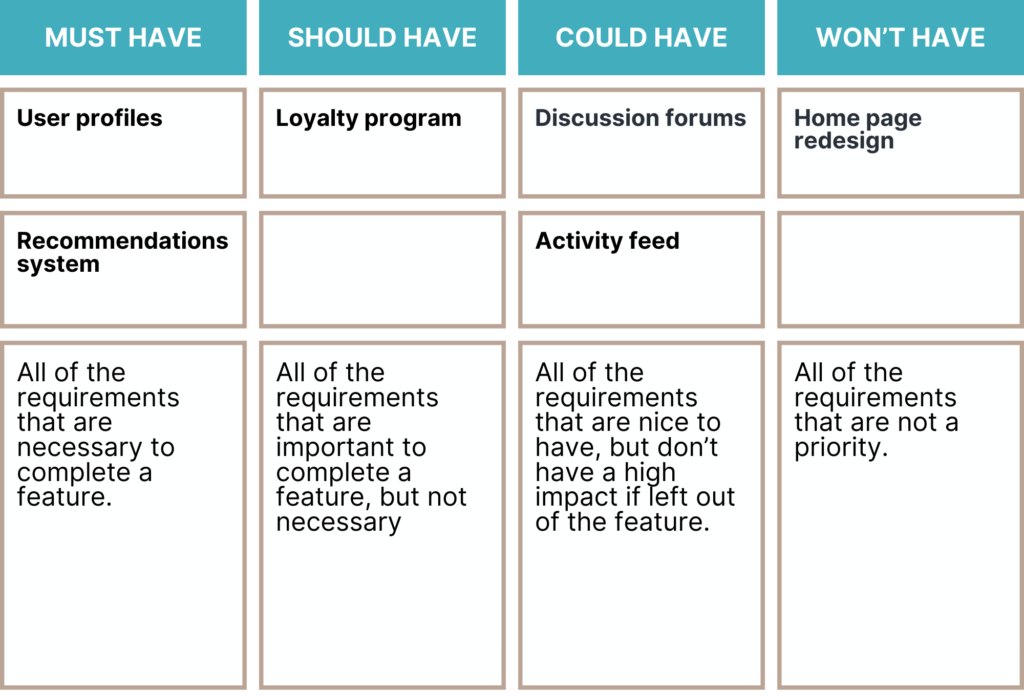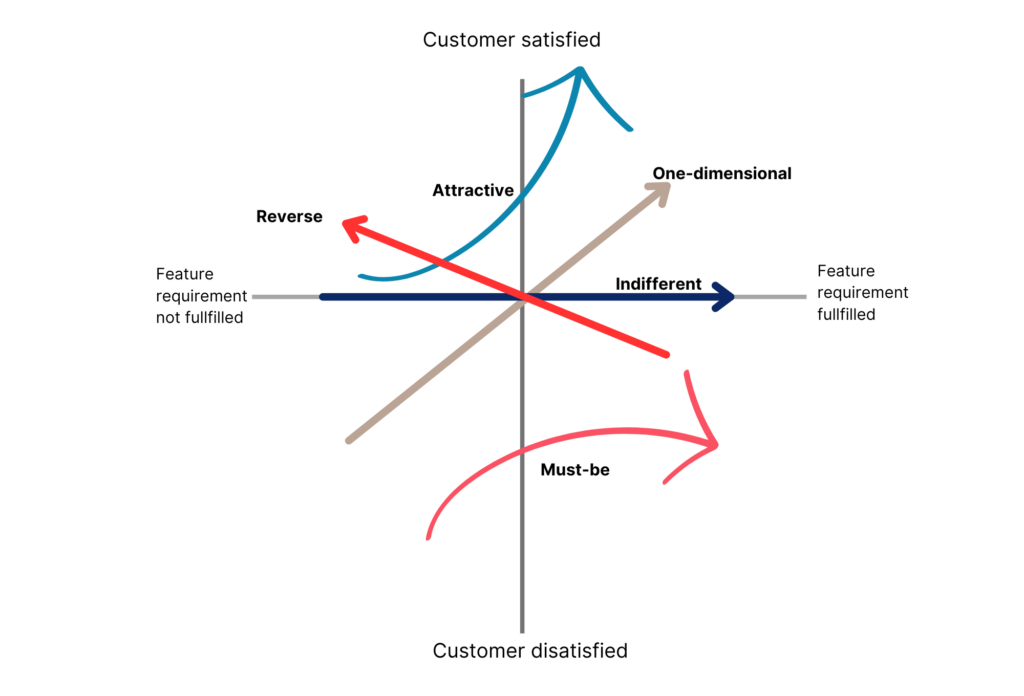Are you looking for guidance on how to prioritize your product management efforts and get the most value out of your investments? You’ve come to the right place! This article focuses on strategic techniques for product management prioritization that can help you boost your ROI significantly.
Prioritizing product management effectively can help you to efficiently allocate resources. It also ensures that you focus on the right initiatives that align with your business objectives and customer requirements.
Let’s discuss how you can identify high-impact initiatives, assess customer value, evaluate market opportunities, and mitigate risks.
Understanding ROI and its importance in product management
Return on Investment (ROI) is a fundamental metric that allows businesses to evaluate the profitability of their investments.
In product management, ROI represents the value generated by a product or feature compared to the resources invested in its development and maintenance.
For product managers, it is important to understand and enhance return on investment (ROI) as it empowers them to take well-informed decisions.
As a product manager, you need to consider both the costs and benefits associated with each initiative to calculate ROI.
Costs may include development expenses, marketing efforts, and ongoing support, while benefits can be measured in revenue generated, customer satisfaction, or market share gained.
Common challenges in product prioritization
Prioritizing product features and initiatives can be overwhelming, mainly when only limited resources are available. Some common challenges in product prioritization include:
- Lack of clear goals and objectives: With a well-defined product strategy, it becomes easier to prioritize initiatives that align with the overall business goals and customer needs.
- Subjectivity and bias: Personal opinions and biases can influence the prioritization process, leading to decisions that may not be based on objective data or customer value.
- Lack of data: Insufficient data or inadequate analysis can restrict the ability to accurately assess the potential ROI of different initiatives, making it challenging to prioritize effectively.
TIP: To overcome these challenges, you can adopt a structured approach that combines data-driven analysis, customer insights, and strategic alignment with business objectives.
Techniques for prioritizing product features based on ROI
To prioritize product features based on ROI, you can use various techniques to evaluate each initiative’s potential impact and value. Below are some effective methods to consider:
#1. Using data analysis to identify high ROI opportunities
Data analysis plays a crucial role in identifying high- ROI opportunities. You can gain valuable insights into potential revenue-generating features or enhancements by analyzing historical sales data, customer behavior, and market trends.
Additionally, you can leverage user feedback and engagement metrics to understand customer preferences and pain points.
#2. The Eisenhower Matrix: A tool for prioritizing product tasks
The Eisenhower Matrix, commonly called the Urgent-Important Matrix, is an effective tool for prioritizing tasks based on their urgency and importance. This matrix categorizes tasks into four quadrants:
- Urgent and Important: These tasks should be prioritized as they have both immediate and significant impacts on the product’s success. Examples could include critical bug fixes or addressing customer support issues.
- Important but not Urgent: Tasks falling into this quadrant require careful consideration as they have long-term impacts and contribute to the product’s strategic goals. These tasks should be planned and scheduled accordingly to ensure they are addressed.
- Urgent but not Important: Tasks in this quadrant may seem urgent but have little impact on the product’s success. Product managers should delegate or minimize these tasks to focus on more critical initiatives.
- Not Urgent and not Important: These tasks should be eliminated or postponed as they do not contribute to the product’s success or ROI. Product managers should avoid wasting resources on these low-priority tasks.
When to use it?
Suppose you’re dealing with a long list of tasks or responsibilities and need help knowing where to start. In that case, the Eisenhower Matrix is an excellent tool to prioritize them based on their urgency and importance.
This technique is proper when you feel overwhelmed and need to identify which tasks need immediate attention and which can be postponed or delegated.
TIP: It’s important to review and re-evaluate your priorities periodically. As situations evolve and new responsibilities emerge, tasks once deemed urgent or important may lose their significance.
#3. The MoSCoW method: Prioritizing product requirements

The MoSCoW method is a prioritization technique that focuses on categorizing requirements based on their importance. The acronym stands for:
- Must-Have: These requirements are essential for the product’s success and must be included in the initial release or iteration. They have a direct impact on ROI and customer satisfaction.
- Should-Have: Requirements falling into this category are important but not critical for the initial release. They can be deferred to subsequent releases or iterations without compromising the product’s viability.
- Could-Have: These requirements are desirable but optional. They can be considered if time and resources allows it, but they should not be prioritized over must-have or should-have requirements.
- Won’t Have: These requirements are explicitly excluded from the current scope or roadmap. They can be revisited in the future if business needs or market conditions change.
When to use it?
If you’re working on a project and need to prioritize the requirements or features based on their importance, the MoSCoW method is an excellent tool.
This technique is beneficial when you have limited resources, time, or budget and need to make strategic decisions about what to prioritize and what can be deferred or excluded.
#4. The Kano model: Prioritizing product features based on customer satisfaction

As a product manager, you can significantly enhance customer satisfaction by prioritizing features using the Kano model. The model categorizes features into five categories:
- Must-Be: These are basic features that customers expect as a minimum requirement. Failure to include these features can result in significant dissatisfaction and negatively impact ROI.
- One-Dimensional: One-dimensional features directly correlate with customer satisfaction. Incorporating various features can greatly enhance a product’s appeal and increase customer satisfaction. Prioritizing these features can lead to increased customer loyalty and, ultimately, higher ROI.
- Attractive: Customers do not expect attractive features, but their inclusion can delight and surprise them. These features can differentiate the product from competitors and generate positive word-of-mouth, enhancing customer acquisition and retention.
- Indifferent: Indifferent features do not significantly impact customer satisfaction. Prioritizing these features may result in a small ROI.
- Reverse: Reverse features are disliked by customers and can hurt satisfaction if included. These features should be avoided or removed from the product to prevent customer dissatisfaction and potential revenue loss.
When to use it?
If you’re seeking to enhance or create a product or service and want to assess the effect of different features on customer satisfaction and competitive differentiation, the Kano Model should be your go-to prioritization tool.
The Kano Model is particularly beneficial when you have a slate of potential features or requirements and need to prioritize them based on their potential to satisfy customers, satisfy basic expectations, or offer a competitive edge.
TIP: Instead of treating all features equally, use the Kano model to categorize features into basic, performance, and delight categories. Focus on understanding customer expectations and preferences by soliciting feedback and conducting surveys.
#5 Agile prioritization techniques for maximizing ROI
Agile frameworks offer a flexible and iterative approach to prioritize initiatives based on their potential ROI. Some fundamental agile prioritization techniques include:
- User Stories and Story Mapping: User stories help define the product’s functionality from the user’s perspective. By prioritizing user stories based on their impact on ROI and customer value, you can ensure that the most critical features are delivered first.
Story mapping is a technique that allows you visualize and prioritize user stories coherently and logically, enabling you to identify dependencies and plan releases effectively. - Relative Weighted Shortest Job First (WSJF): WSJF is a prioritization technique that considers each initiative’s value, time, and risk.
To determine the order of priority for different initiatives, you can calculate a priority score by assigning weights to multiple factors. This approach enables you to prioritize initiatives based on a combination of ROI and other relevant considerations. - Minimum Viable Product (MVP): MVP involves delivering the minimum set of features that can provide value to customers and generate feedback.
When prioritizing features that form the core of the product’s value proposition, you can validate assumptions, gather feedback, and iterate based on customer insights, ultimately driving ROI.
These agile prioritization techniques enable you to adapt to changing market conditions, iterate quickly, and maximize ROI by delivering value early and continuously.
Case study: A real-life example of successful ROI-driven product prioritization
To illustrate the power of strategic product management prioritization techniques, let’s examine a real-life case study:
Netflix invests billions of dollars annually in producing and licensing content to attract and retain subscribers.
They prioritize their content investment decisions based on ROI metrics, focusing on producing and licensing content that delivers the highest return on investment in terms of subscriber acquisition, retention, and engagement.
Netflix leverages data-driven insights and audience segmentation to allocate their content budget strategically and track the performance of their content library.
By prioritizing content investment based on ROI metrics, Netflix has built a diverse and compelling content library that appeals to a wide range of audiences worldwide, driving significant subscriber growth, retention, and revenue.
Final Thoughts
Prioritizing product management efforts based on ROI is crucial for businesses seeking sustainable growth and profitability. As a product manager, it is important to make informed decisions and allocate resources effectively to drive higher ROI.
This can be achieved by understanding ROI, leveraging data analysis, and applying prioritization techniques such as the Eisenhower Matrix, MoSCoW method, and Kano model.
Additionally, embracing agile methodologies can help you adapt to changes in the market and continuously evaluate your priorities. Keep in mind that effective product management prioritization is an ongoing process that requires collaboration with stakeholders and continuous evaluation and adaptation.
Achieving long-term success is within reach when you prioritize your product roadmap strategically. But make sure you use prioritization techniques that work best for your product.

